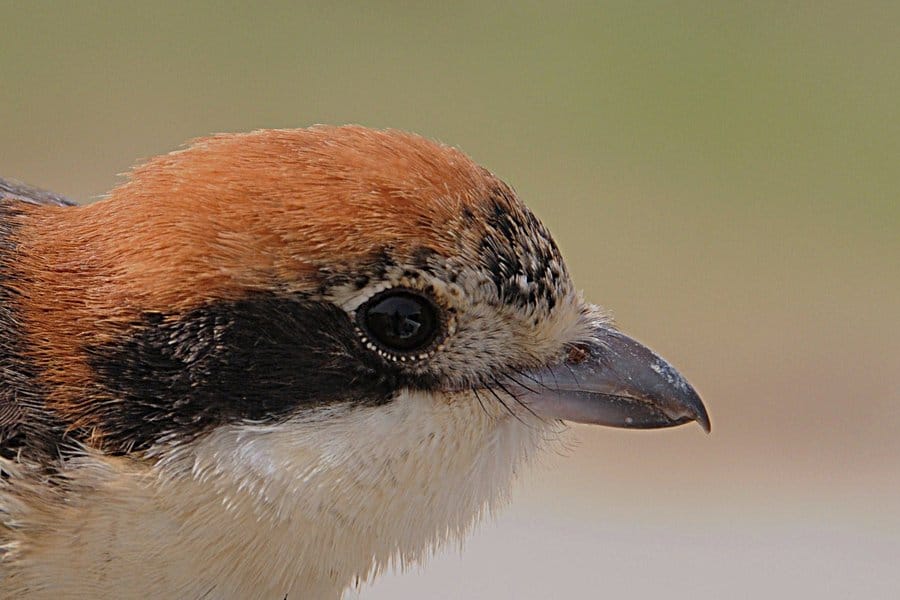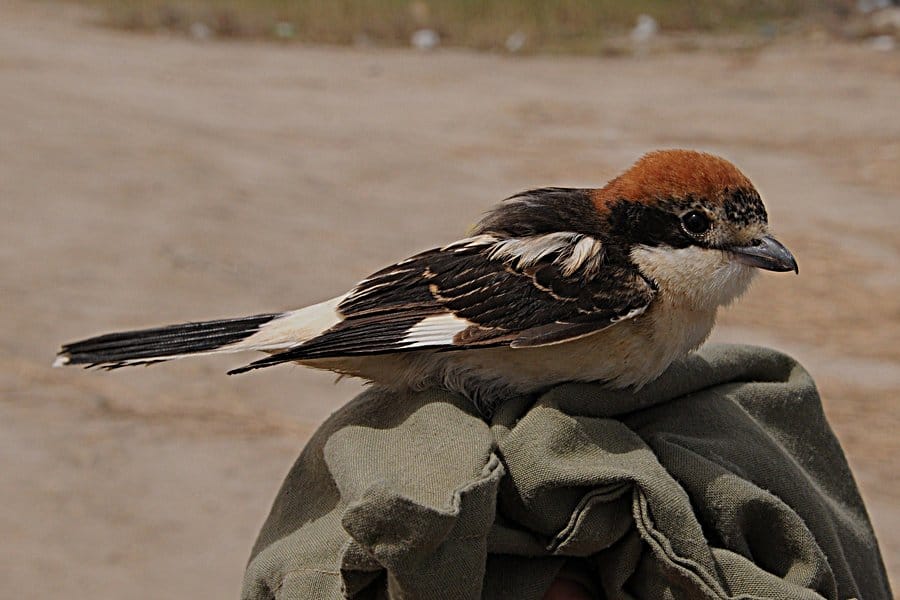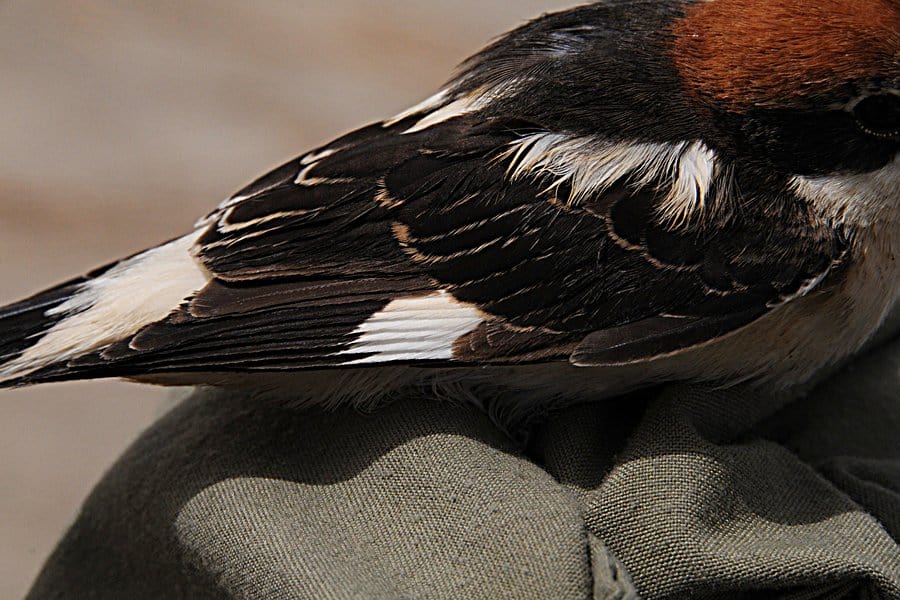Information on the Eastern Woodchat Shrike (Lanius senator niloticus) is not so easy to come by on the internet and as a result I am posting a few details of this eastern sub-species of Woodchat Shrike here.

Identification is fairly straightforward on spring/summer males with the lores and feathers next the nostrils white and an otherwise broad black forehead and a line through the eyes and ear-coverts, extending down the sides of the neck. The crown, nape and hind neck are a bright chestnut contrasting with the back black which shades into a grey rump. The upper tail-coverts are white and although the tail has black central feathers they have broad white bases measuring 25 – 35 mm in length.

The tips to each feather are white, although this may be difficult to see on the central tail feathers, and the white on the tail base increases until the outermost feather is all white with a small black patch on the inner web. The scapulars are white with the wing-feathers black except for a broad white patch at the base of all the primaries measuring about 17 – 20mm in length from the primary coverts on the closed wing.

The female niloticus often has no black on the face even in adult plumage. Juveniles shown extensive moult of the body feathers, particularly the median and greater coverts on migration, with the equivalent moult in the nominate race senator occurring on the wintering grounds after migration. They are normally paler than nominate with greyer upper-parts. Birds average smaller to the west of their range and larger to the east.

As it is quite distinct and I suppose is a possibility as a vagrant in southern Europe or elsewhere it is worth looking out for if you bird these areas as it has been a very good spring for this species in Saudi Arabia so far with many more birds seen than normal and birds arriving slightly earlier than the previous year at least.

Jem Babbington
Jem Babbington is a keen birder and amateur photographer located in Dhahran, Eastern Saudi Arabia where he goes birding every day. Jem was born in England and is a serious local patch and local area birder who has been birding for almost forty years and has birded in more than fifty countries. Jem is learning to ring birds in Bahrain as a perfect way to learn more about the birds of the area. Saudi Arabia is a very much under-watched and under-recorded country.


Leave a Reply